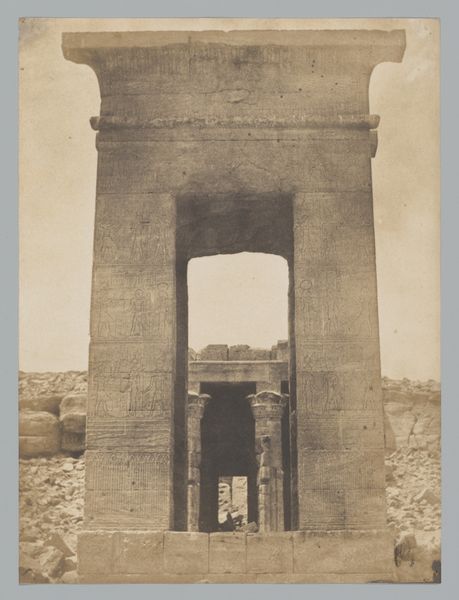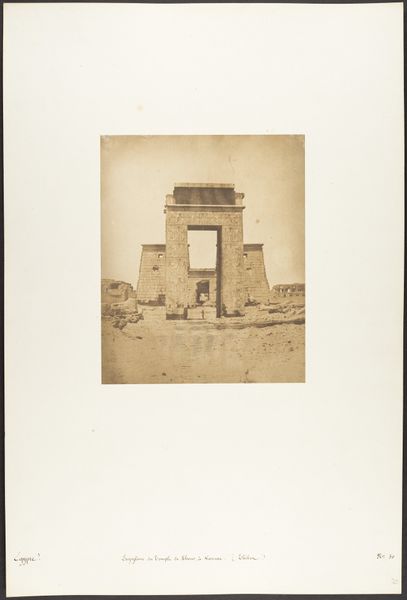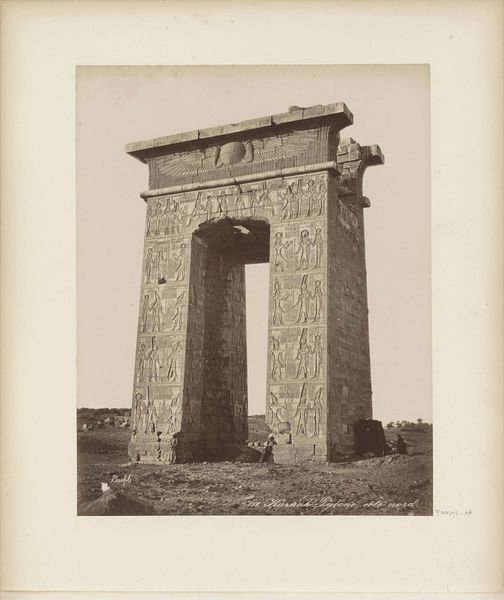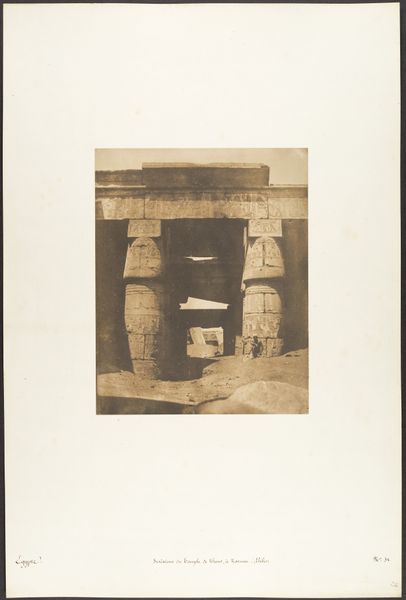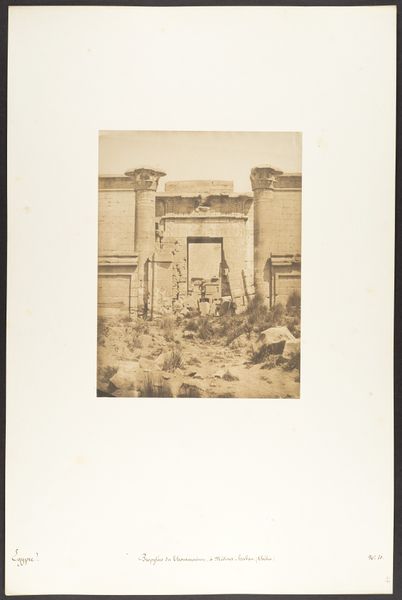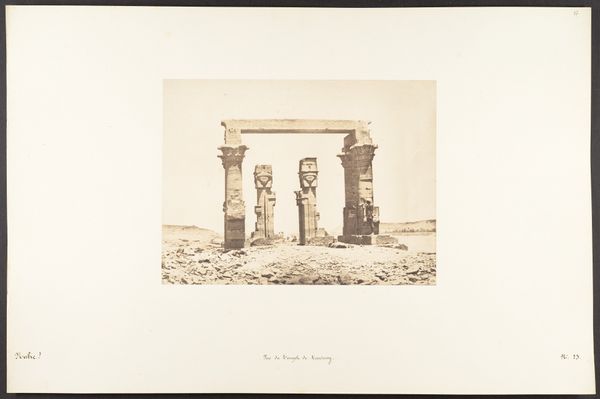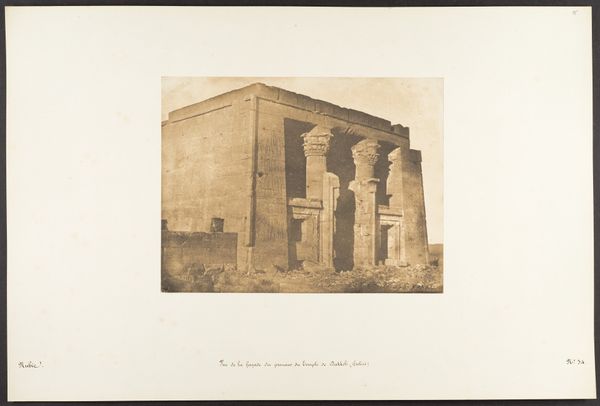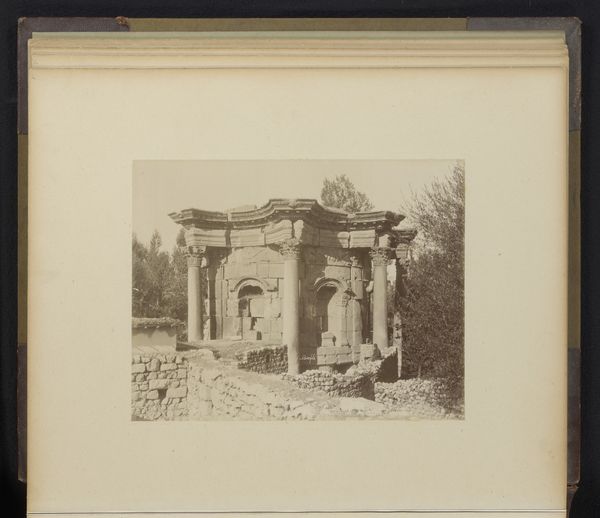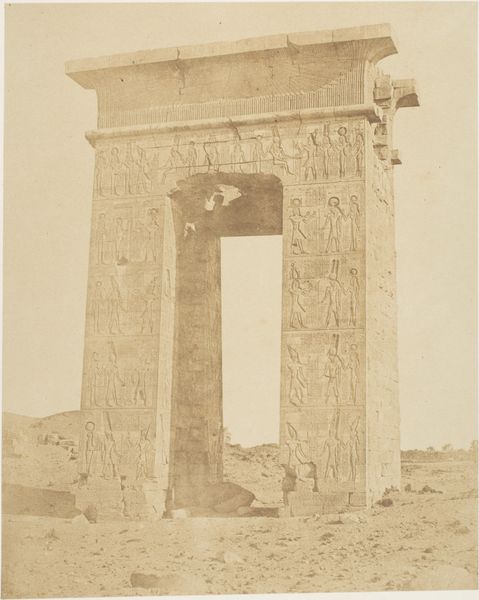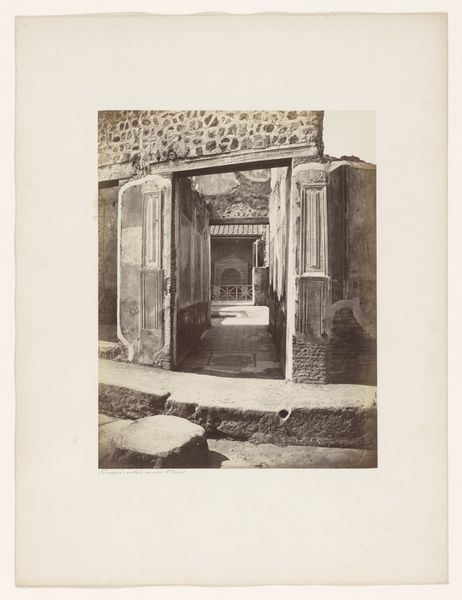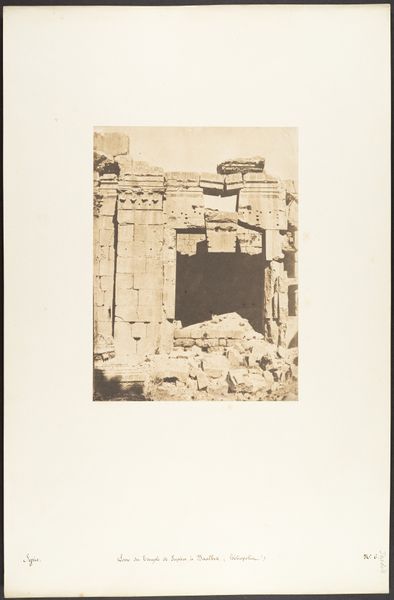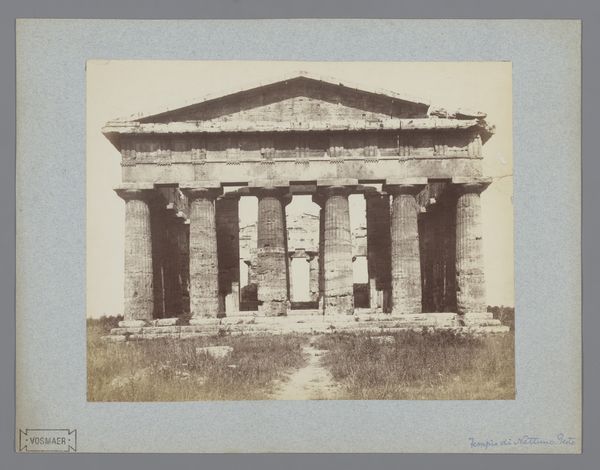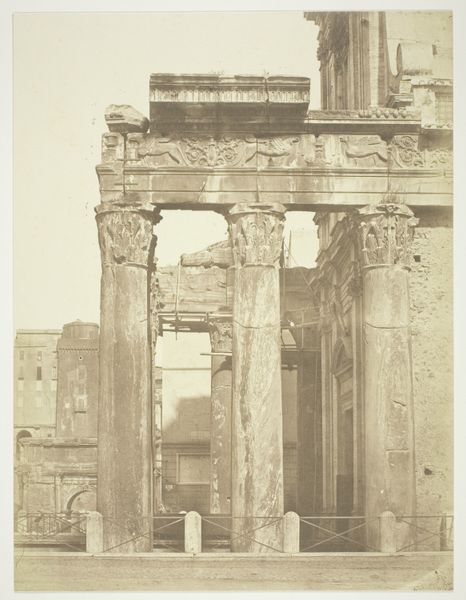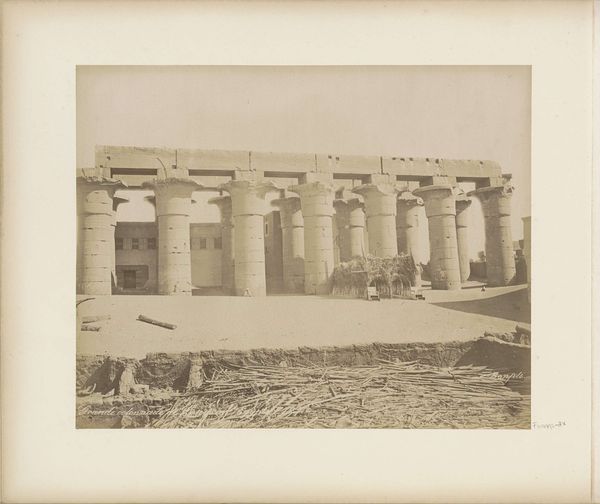
Propylon du Temple de Dandour (Tropique du Cancer) 1850
0:00
0:00
print, daguerreotype, photography, architecture
# print
#
landscape
#
daguerreotype
#
ancient-egyptian-art
#
photography
#
architecture
Dimensions: Image: 8 7/8 × 6 5/8 in. (22.5 × 16.8 cm) Image: 8 7/8 × 6 9/16 in. (22.5 × 16.7 cm) Mount: 18 11/16 × 12 5/16 in. (47.5 × 31.2 cm)
Copyright: Public Domain
Editor: This is Maxime Du Camp’s "Propylon du Temple de Dandour (Tropique du Cancer)," a daguerreotype from 1850. The monochrome tones lend it a very still, almost timeless quality. I’m struck by how the architectural forms dominate, so monolithic and imposing against what looks like a barren landscape. What structural elements stand out to you most? Curator: I am immediately drawn to the composition's emphasis on geometric forms: the clear-cut lines of the propylon against the broken, rocky landscape. It is crucial to observe the sharp contrast between light and shadow, shaping the monument’s facade. Do you perceive how the play of light across the stone underscores its inherent texture? Editor: Absolutely. It’s almost like the light itself is revealing the grain of the stone. The way the smaller temple is framed through the opening of the propylon is really interesting too. Curator: Indeed. Notice how that framing establishes depth within the image. The composition guides the eye from the foreground’s imposing structure to the subtle nuances of the temple in the background. Consider, too, the very deliberate positioning. Are you noticing any asymmetrical elements? Editor: Now that you point it out, the landscape surrounding the structure is notably more chaotic on the right side, juxtaposed against the straighter lines of the temple. Is there any symbolism here? Curator: What appears significant is not symbolic, but the contrast itself—the opposition of constructed order and natural disorder, emphasized by Du Camp's strategic framing and deployment of light. Reflect on the material qualities: the texture of the stone, the precision of the photographic process itself, how the artist coaxes structure out of a seemingly infinite panorama. Editor: That makes so much sense. I see now how Du Camp’s photograph is not just a document but also a formal study, making contrasts work so well to define each element. Curator: Precisely. What we are left with is an intricate arrangement of forms, surfaces, and contrasts, meticulously captured and composed.
Comments
No comments
Be the first to comment and join the conversation on the ultimate creative platform.
